A lintel beam is defined as a horizontal member that is placed across an opening to support the portion of the structure above it like doors, windows, etc. Its function is just the same as that of an arch or a beam. It is a very common part of every building. The construction procedure of lintel is easy and simple. However, for an arch, special formwork or centering is required. Both ends of lintels are built into the masonry and thus the load carried by lintels is transferred to the masonry in jambs. Generally, R.C.C. lintels are widely used to span the openings for doors, windows, etc. in a structure.
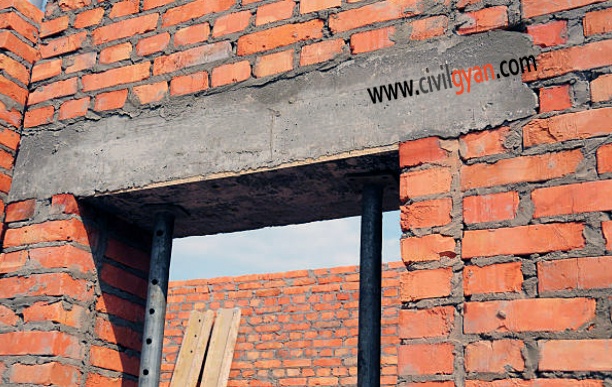
In general, it should be noted that the bearing of lintel i.e. the distance up to which it is inserted in the supporting wall should be as per the standard specification or the minimum of the following three considerations:
- 100 mm; or
- height of lintel; or
- one-tenth to one-twelfth of the span of the lintel.
Types of Lintels
- Wood or timber lintels
- Stone lintels
- Brick lintels
- Steel lintels
- Reinforced cement concrete lintels.
1. Wood or Timber lintels:
These lintels consist of pieces of timber or wood that are placed across the opening. These are the oldest types of lintels and are largely used where timber is easily available. If the timber lintels are strengthened by the provision of mild steel plates at their top and bottom surfaces, they are known as flitched lintels.
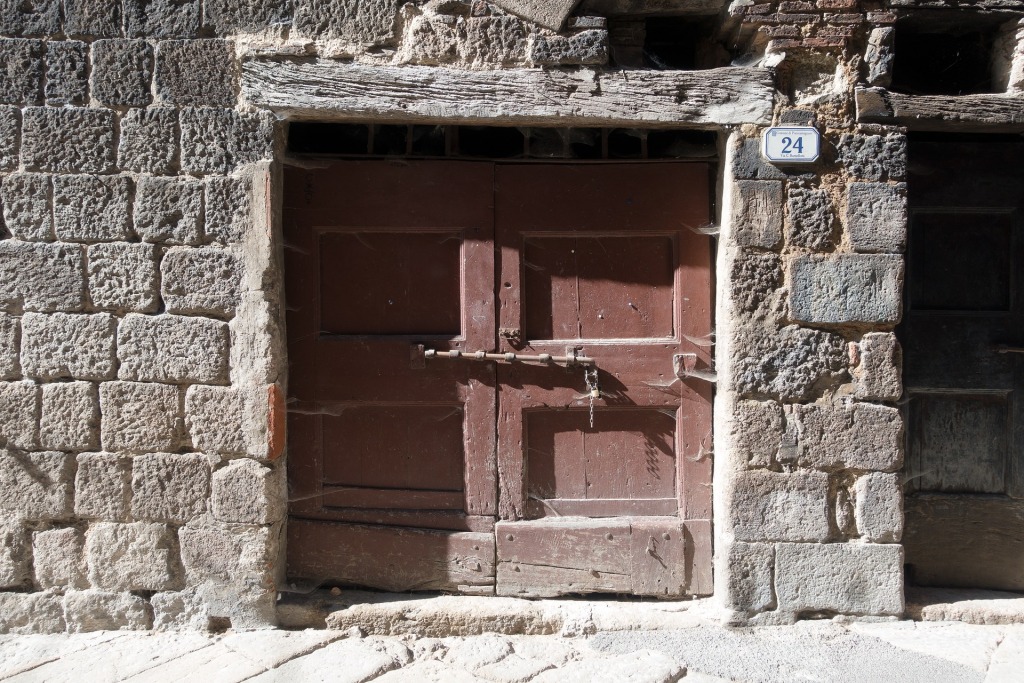
Following are the important features of wood/timber lintels:
- A bearing of about 150 mm to 200 mm should be provided on the wall and the ends of timber lintel should be placed on mortar so as to create a level and firm bonding.
- The width of the timber lintel should be equal to the thickness of the opening and the depth should be about 1/12 to 1/8 of the span with a minimum value of 80 mm.
- The timber lintels are liable to be destroyed by fire and are also liable to decay by the atmospheric action or by the action of insects and fungi, if not properly ventilated. Hence a sound and hard timber wood like teak should be used in the construction of these lintels and a coat of suitable preservative should be applied on the surface.
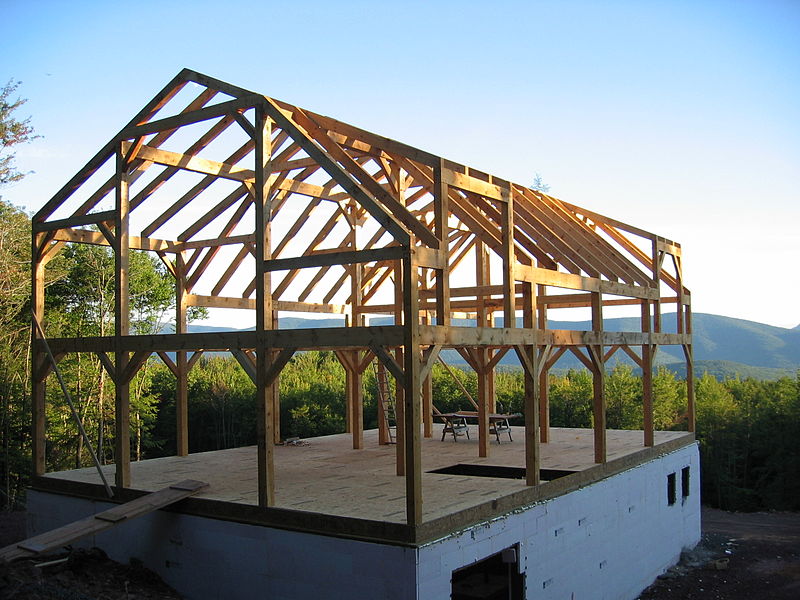
2. Stone Lintels:
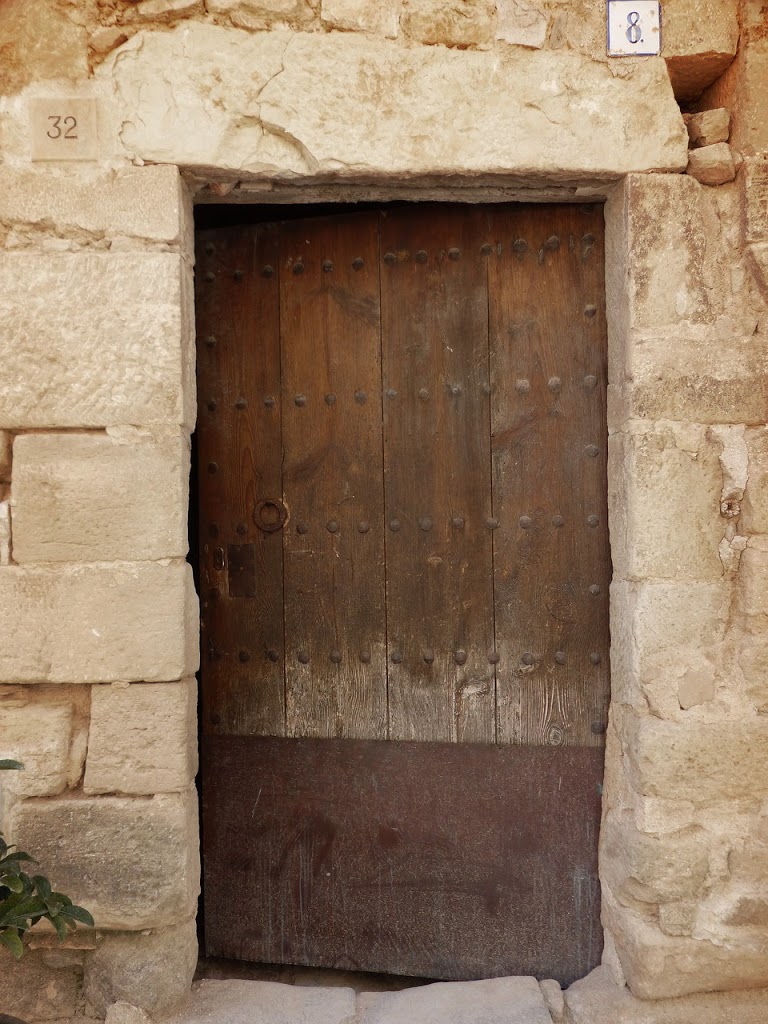
As the name indicates, these lintels are slabs of stones that are placed across the opening of the wall. It can be formed of a single piece of stone or more than one piece. The stone lintels are not generally favored because it has some drawbacks which are jotted below:
- The stone lintels are not favored for long spans because of their low tensile strength property. So, when the span exceeds 1m in length, relieving arches should be provided. The proportion of depth of the stone lintel to the length of the opening should be at least 1:10 i.e., one mm per ten mm length of the opening.
- The stone lintels should be used with caution where shock waves are likely to occur frequently as the stone is liable to crack if subjected to vibratory loads.
- It is a difficult task to obtain a good stone of the required depth and shape.
- The transportation of these stones is also a very complex task.
3. Brick Lintels:
These types of lintels consist of bricks and are used to span small openings (less than 1 m) with light loading. When the load is heavy and the span is more, in this case, the lintel should be used constructed of reinforced brickwork.
These are the important points we have to keep in mind while constructing brick lintels:
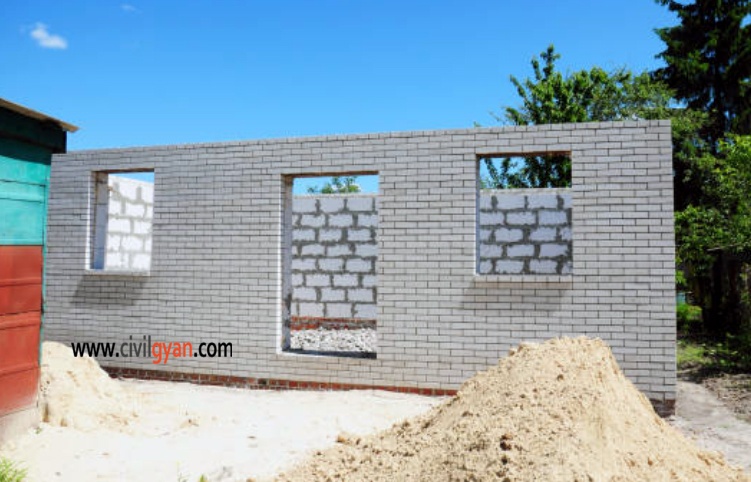
- Good quality bricks should be used which are free from any cracks and have sharp and square edges.
- Temporary support is provided in the construction of brick lintel which is known as a “turning piece”.
- Bricks having frogs are more suitable because it increases the shear resistance of the end joints as frogs are filled with mortar which forms keys between different layers of the bricks.
4. Steel Lintels:
Steel lintels consist of steel angles or rolled steel joists. Rolled steel joists are used for large spans and heavy loading and steel angles are used for small spans with light loading.

The steel joists are usually embedded in the concrete to protect the steel from corrosion and from the action of fire. When a single unit of steel joist is used, it is either embedded in the concrete or cladding with stone facing to match the width of the wall. In the case of more than one unit tube separators are provided to keep the steel joists in position.
5. Reinforced Cement Concrete Lintels (R.C.C. lintels):
Nowadays, reinforced cement concrete lintels (R.C.C. lintels) are widely used because of their durability, fire-proof nature, high strength, and simplicity. It is very easy to construct and is economical as well.
The nominal concrete mix ratio for R.C.C. lintel is 1:2:4.
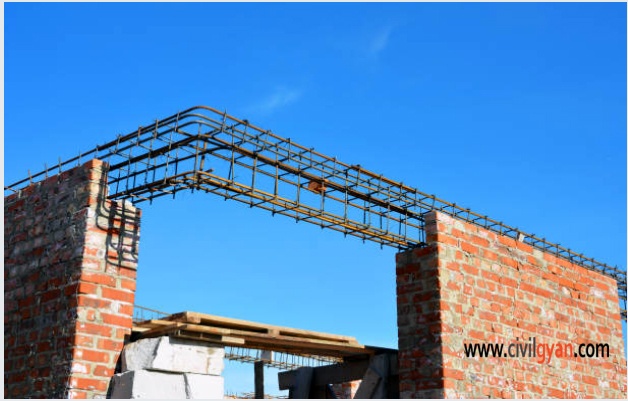
Reinforced cement concrete lintels are of two types:
- cast-in-situ, and
- pre-cast.
Cast-in-situ lintels are constructed directly on the opening with proper formwork and centering. The amount of reinforcement in these lintels depends upon the span of the lintel, the width of the opening in the wall, and the subjected load to be supported by the lintel.
Pre-cast lintels are used for smaller spans up to 2 meters. It is largely used nowadays because of its economical nature as the mold used for casting the lintel can be used multiple times.
Also Read:
I hope you got complete information about the Types of Lintel Beam, Uses & Design Ideas in this article. If you found this article helpful, feel free to share it with your friends. Leave a comment if I missed anything.Happy Learning!!


